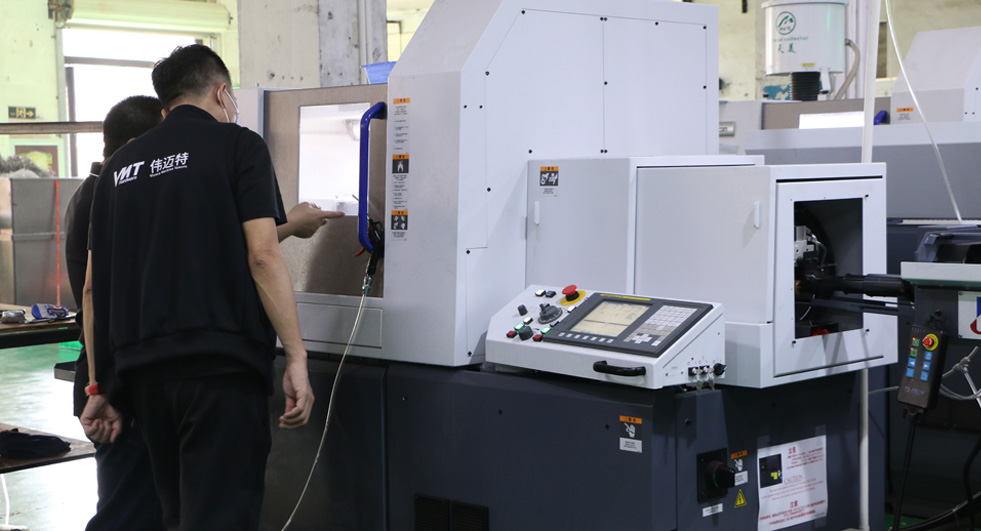
Slender shaft processing method
The slender shaft has poor rigidity and is extremely easy to deform during precision CNC machining, which will affect the machining accuracy and machining quality. Therefore, the following measures are usually adopted to solve this problem.
(1) Improve the clamping method of the workpiece
During rough precision CNC machining, due to the large cutting allowance, the workpiece is subjected to a large cutting force. Generally, the clamping method is adopted, and the tailstock center adopts an elastic center, which can make the workpiece freely elongate in the axial direction. However, due to the limitation of the elasticity of the center, the axial elongation is also limited, so the tightening force is not very large. In high-speed, large-volume cutting, there is a danger of making the workpiece out of the center. Carafa can be used to avoid this phenomenon.
When finishing the car, the double center method (the tailstock should use the elastic center at this time) is beneficial to improve the accuracy, and the key is to improve the accuracy of the center hole.
(2) Adopt the knife holder
The follower is an extremely important accessory for turning slender shafts. The use of the follower tool holder can offset the influence of the radial cutting component during precision CNC machining, thereby reducing cutting vibration and workpiece deformation, but careful adjustment must be paid to keep the center of the follower tool holder consistent with the center of the machine tool.
(3) Adopt reverse feed
When turning a slender shaft, the precision CNC machining turning tool is often made to feed in the direction of the tailstock (the cara tool should be installed at this time), so that the direction of the feed force exerted by the tool on the workpiece is toward the tailstock, thus causing the workpiece to produce axial elongation The Kara tool greatly reduces the bending deformation caused by the elongation of the workpiece.
(4) Using turning tools for turning slender shafts
Turning tools for turning slender shafts generally have large rake angles and entering angles to make cutting brisk and reduce radial vibration and bending deformation. The turning tool for rough machining has chip breakers on the rake face to make chip breaking easy. The precision CNC machining turning tool often has a certain negative edge inclination, so that the chips flow to the surface to be machined.